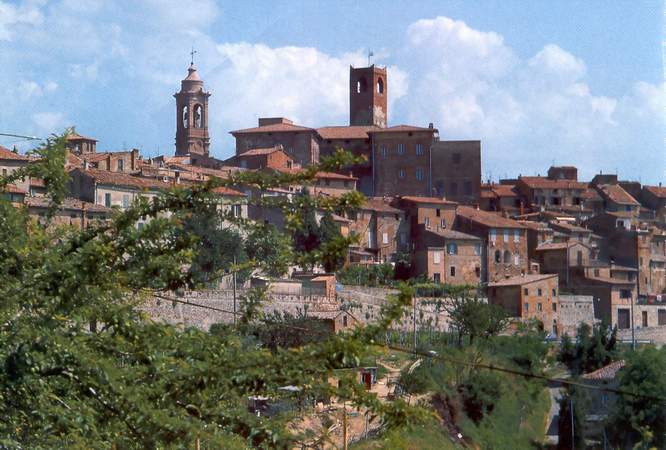During the English Coronavirus lockdown I've had some fun taking part in on-line antiques auctions and bought several things from local sales, available afterwards using their click and collect systems.
It was in one of these recent sales that I bought the ceramic plaque featured in the photograph below and I considered it quite a find.
 |
| The Ceramic Plaque I bought at a recent on-line auction featuring Girolamo Savonarola |
Measuring 12.5 centimeters in diameter it has a white moulded border, the middle with a pale blue ground centred with a relief profile of a hooded friar. At the top there's a pierced hole in the border for a string so it can be wall mounted and the back has a large chip, not visible from the front.
This roundel, or plaque I suppose you could call it, is in the style of ceramicist Lucca Della Robbia - a highly respected sculptor and potter working in Florence in the 15th century and known for producing, in his large workshops, tin-glazed earthenware one-off objects of an architectural character as well as smaller more mass-produced items like this one.
I'm unsure of the origin or age of this item - it could be very old, but my examination of it and instinct tells me its more likely to be a reproduction piece, perhaps made in the 19th century. What drew me to it was not only the recognizable Della Robbia inspiration for the roundel, but the subject of the man shown on it. Represented as a portrait head in profile - a popular type of depiction in Renaissance art and in turn inspired be the depictions of the heads of Emperors on excavated Roman coins - it features one of the best known religous figures of late 15th century Florence - Friar Girolamo Savonarola, a man who had a huge impact on historical events in the city in the late 1400's.
Savonarola (1452-1498) was a Dominican friar who moved to the monastery of San Marco, Florence, in 1482 to take up the position of teacher and lecturer. In the first few years he made little impact, but then, in 1485, he began to espouse a philosophy of religous renewal. After a period of a couple of years away from the city he returned in 1490 and started giving sermons again, vehemently challenging the corrupt nature of the church, the abuse of power by the elite (particularly the Medici) and the need for religous renewal and a more democratic style of government. The eventual driving out of the Medici from Florence by his supporters and the introduction of a republic, of which he was essentially in charge, served to enhance his reputation and power. He's perhaps best known for his attack on humanism and the arts - calling for "a bonfire of the vanities" in the Piazza del Signoria where the elite were encouraged to burn profane books and works of art.
 |
| Girolamo Savonarola by Fra Bartolomeo c1498 Museo di San Marco, Florence |
Later, in 1498, his enemies managed to instigate a trial by fire to test his faith and influence, but this turned in to fiasco. Public opinion by this time was turning against him. In May 1498 the church and Florentine Civil Authorities tried and condemned him, along with two other monks and all three were burned in the main square. A plaque in the Piazza today marks the spot where the burning took place.
 |
| This painting shows the imminent burning of the three friars, including Savonarola, in 1498 |
His influence contined however in to the early 16th century keeping his causes of religous reform and republican freedom very much alive, at least until the restoration of the Medici to power in 1512.
 |
| Plaque to Girolamo Savonarola in the Piazza della Signoria Florence This marks the spot of the fire that burnt him to death |
I love the fact that a simple commemorative object like the one I bought at the sale can act as a starting point for research and investigation into an intriguing subject that can then form the substance of a post like this one.
Ciao - Ian
